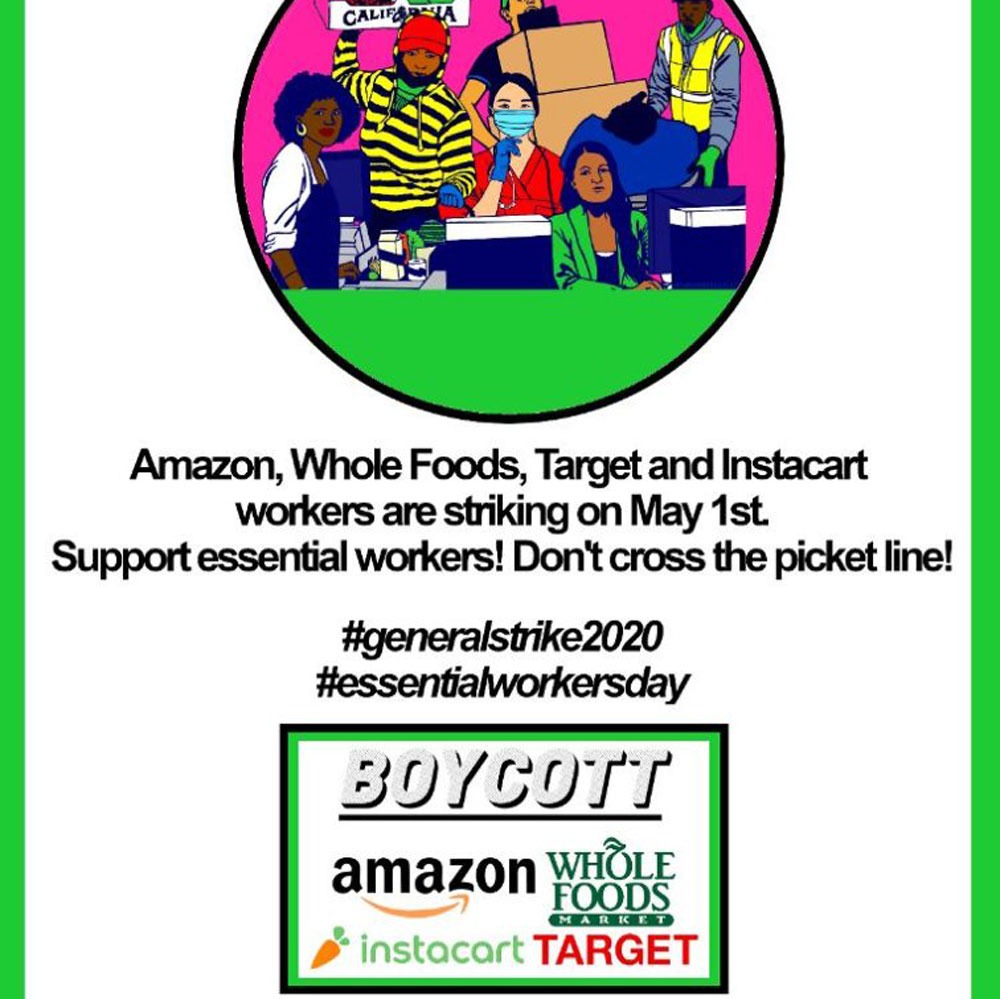
May 1, 2020; Vox and National Public Radio
“Essential workers at major companies like Amazon, Instacart, and Target across the United States on Friday protested for better safety protections, working conditions, and pay” on Friday, reports Shirin Ghaffary in Vox.
For NPR, Shannon Bond reports on one of a set of coordinated protests held outside an Amazon warehouse in Staten Island, New York. “This company failed us. It failed the workers. It failed me,” said Christian Smalls at the rally.
Smalls, according to Amazon, had been fired in March for “violating quarantine and safety measures,” although Smalls himself says he believes he was fired in retaliation for speaking out about unsafe working conditions.
While there were protests, generally modest in scale, across the nation, Ghaffary notes that the walkouts were insufficient to shut down warehouses. Still, Ghaffary points out that the coordinated worker actions still mark an important milestone: organizers “brought together a coalition of low-paid, non-unionized, often temporary employees from some of the largest companies in the US” for the first time.
The demands, as NPQ noted last Thursday, focused on four main issues:
Sign up for our free newsletters
Subscribe to NPQ's newsletters to have our top stories delivered directly to your inbox.
By signing up, you agree to our privacy policy and terms of use, and to receive messages from NPQ and our partners.
- Compensation for all unpaid time off used since the beginning of the COVID-19 crisis in March;
- Hazard pay or paid sick leave to be provided for the duration of the pandemic;
- Protective equipment and all cleaning supplies to be provided at all times by the company; and
- A demand for full corporate transparency on the number of cases in facilities.
Companies claim to have been responsive. Bond reports that the companies say that “they value workers’ input and are offering increased pay and aggressive health and safety measures, such as giving out masks and cleaning stores and warehouses.”
Workers acknowledge that some policies have improved, but say the improvements are inadequate. In response, “Instacart shoppers, Amazon pickers, and FedEx delivery workers have been meeting virtually through the pandemic on Zoom, Telegram, Facebook, and other platforms” to coordinate the May 1st walkouts, Ghaffary explains.
These actions will surely continue. “We formed this alliance because we all have one common goal, and it’s to save our communities and save our families,” notes Smalls.
As to whether labor coordination grows over time, that remains to be seen, but a couple of prominent national labor analysts believe that is likely. “We haven’t seen anything like this since the 1930s—a crisis like this and workers who are hurting badly,” Thomas Kochan, a professor of management at the Massachusetts Institute of Technology (MIT) tells Ghaffary. Kochan adds that he thinks the current conditions will “wake up” the public to longstanding labor issues.
Ruth Milkman, a sociologist at City University of New York, also sees a rising tide of labor activism gradually emerging, observing in American Prospect that, “From Amazon warehouses to McDonald’s restaurants, from supermarkets to Instacart, walkouts demanding safety improvements are making national headlines. Factory workers, too, are pressuring employers to close plants down and keep them closed unless and until they are sanitized thoroughly.”—Steve Dubb











